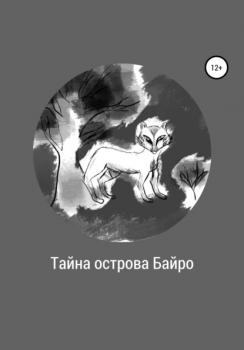Автор
Все книги издательства АвторЧетвёртый Рим
На руинах бывшей Сибири, вознёсся наследник исторической России. Государство полное контрастов. Здесь высокие технологии и виртуальная реальность уживаются с жёстким сословным делением, а могущественными корпорациями заправляют дворянские семьи. Таинственный Хозяин – деспотичный диктатор, на деле лишь катализатор между несколькими олигархическими кланами. Страна, которая возвышает немногих, за счёт страданий большинства. Здесь мракобесие и прогресс слились в извращённом симбиозе. Добро пожаловать в Ирий – четвёртый Рим! Содержит нецензурную брань.
Тайна острова Байро
Команда путешественников отправляется в экспедицию, но вот, проблема! Гроза, сильный ветер, шторм– привели к кораблекрушению. Но наша команда героев не сдалась! Во снах, да и наяву ночью, главный герой Карло видел галлюцинацию в виде старичка, который в скором времени стал помогать героям спастись с этого острова, что произошло дальше читайте книгу "Тайна острова Байро."
Так решила судьба
Небольшая история, повествующая о самой простой и чистой первой любви двух подростков, чьи судьбы крепко переплелись между собой. Их отношения полны романтики, нежности и понимания. Несмотря на определенные сложности, пара всеми силами стремится сохранить свое столь хрупкое счастье. Начало и конец этой трогательной истории кроется в вопросе для вас, мой дорогой читатель: "Вы когда-нибудь чувствовали, что уже встретили свою судьбу, но вам не суждено быть вместе? Ни сейчас, ни когда-либо…"
Ассистентка
Что может связывать привлекательного владельца гоночного трека и молоденькую студентку, оказавшуюся в сложной жизненной ситуации? Работа? Возможно. Влечение? Как вариант. А может быть поднимем планку выше и сделаем ставку на любовь?… Содержит нецензурную брань.
Не от мира сего
«Не от мира сего» про далекое прошлое, причем отличное от общепринятой Истории. Древние Былины, эпос Калевала, Библия, хроники Короля Артура и еще кое-что – то, что является основой того прошлого . Главный герой провел тридцать три года в «обезноженном» состоянии – проклятие за мнимые грехи деда-иконописца, полученное в селе Каратаево (от слова karata – бежать, по-ливски). Он – лив, живет в маленькой деревне в Ливонии, имя его – Илейко, прозвище – Чома (красивый, по-ливски), фамилия – Нурманин. Святогор и Дюк Степанович, Мика Селянинович и Сампса Колыванович, волк Бусый и Змей Горыныч, Соловей-разбойник и прочие герои – вполне себе живут, страдают и радуются. Ничто человеческое им не чуждо. Первая книга из четырех.
Развод, или Как соблазнить мужа за 8 дней
После несчастного случая, из-за которого я потеряла ребенка, отношения с мужем сошли на нет. Казалось, наш брак никогда не станет прежним. Но после того, как сама же и предложила развод, с последующим согласием мужа, я будто очнулась от долгого сна. Я поняла, что если не предприму никаких действий, то навсегда потеряю любимого. До развода осталось 8 дней, и я должна что-то сделать. Я должна соблазнить мужа… Содержит нецензурную брань.
Эффект массы. Операция «Венера»
Константин Анатольевич Забродский
Шёл 2147 год, а земляне всё еще не улетели далеко со своей планеты. Мир развивался своим путём. Наступил новый технологический уклад, но Союз и Альянс разделили планету на два политических лагеря. Прилетевший инопланетный боевой дрон вмешался в естественное развитие Земли. Теперь двум сверхдержавам предстоит либо объединиться, либо выйти на новый этап соперничества.
Новая душа для дочери дознавателя
Вот думаешь, что у тебя вся жизнь впереди. Строишь планы, мечтаешь получить вакантное место работы и стать независимой. И вдруг все твои планы и мечты исчезают по вине лихача, который сбивает тебя на пешеходном переходе! Казалось бы, вот и конец! Но не тут-то было! В другом мире, мире, где есть магия, один ушлый некромант преклонного возраста решается на обман и подмену. И вот теперь я являюсь дочерью главного дознавателя королевства! Мне предстоит сделать все возможное, чтобы любящий родитель не догадался о подмене. Задача эта не из легких, но я обязательно справлюсь! Да здравствует новый мир! И новая я!
Имя Кати
Обычная московская девочка решила угнать робота. Преступление шло по плану, Катя почти взломала электронный мозг, но робот неожиданно сделал ей предложение, от которого она не смогла отказаться. С этого начинаются приключения: Катя попадает в «Приют» – общество странных подростков, которых этот загадочный робот свёл вместе. В это время в Италии робот, которого создали как пособие для психотерапевтов, сбегает от создателей. Другая москвичка – Анна – отправляется в командировку, чтобы остановить безумную машину. Двум историям предстоит сойтись в одной точке, а Кате, видимо, придётся быстро повзрослеть.
На африканской улице
Вниманию читателей предлагается сборник стихотворений. Темы: "природа", "история и общество", "искусство и творчество", "любовь и дружба", гражданская лирика, сатира и юмор. Приятного чтения!









